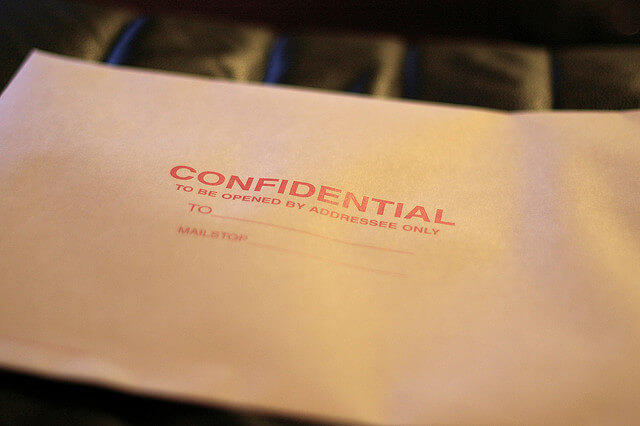Earlier this month, a three-judge panel of the Ninth Circuit Court of Appeals heard oral arguments for In re: National Security Letter v. Holder, on appeal after the United States District Court for the Northern District of California ruled that the nondisclosure provision of 18 U.S.C. § 2709, the statute authorizing the FBI to serve secret National Security Letters (NSLs) to demand certain subscriber information from wire and electronic service providers, violates the First Amendment and is unconstitutional.
The district court also held that 18 U.S.C. § 3511, which provides for judicial review of NSLs, is also unconstitutional because it violates the First Amendment and separation of powers principles. The district court found that the unconstitutional provisions of these statutes (collectively the “NSL nondisclosure provisions”) were not severable from the rest of the statute and the government was enjoined from issuing NSLs or enforcing the nondisclosure provisions, but stayed the injunction to give the government an opportunity to appeal.
Since we last blogged about this case, the Ninth Circuit has accepted and unsealed eight amicus briefs from a variety of parties, including computer science and data experts, members of the House of Representatives, law professors, and other electronic service providers (specifically Google, Facebook, Microsoft, and Yahoo! – full disclosure, ZwillGen represented Yahoo! in this brief), all to support the position of the providers under seal in this case that the Ninth Circuit should affirm the district court’s decision. Also, in January of this year, the Department of Justice announced that it had approved new reporting methods that electronic communications providers can use to inform subscribers about national security demands, which many providers have implemented in their transparency reports.
During the oral arguments, Douglas Letter, arguing for the government, urged the court to follow the Second Circuit’s approach in John Doe, Inc. v. Mukasey, which read into the statute a conforming requirement that the government inform each NSL recipient that the recipient could contest the nondisclosure requirements and if contested, the government would initiate judicial review within 30 days (which would conclude within 60 days). With these additional limitations, the Second Circuit found it avoided most of the significant constitutional deficiencies found by the lower court.
At oral argument , the judges seemed interested in whether the government was following these limitations. The district court had explained that “at the hearing before this [district c]ourt, the government asserted that it was following the mandates imposed by the Second Circuit in the John Doe, Inc. v. Mukasey decision for all NSLs being issued, since it would be impracticable to comply with that decision only in the Second Circuit.” (930 F. Supp. 2d at 1070) During oral arguments Judge Sandra Ikuta expressed concern that the government had passed no regulations to formally implement these procedures. “What we have is an internal direction within the FBI on how to conduct certain types of investigations, and those set out exactly what is to be done, and those say follow what the Second Circuit has done,” the government said. Judge Ikuta asked “would there be any consequences if the FBI decided not to follow them?” The government responded that as they are still under the injunction issued by the Second Circuit in Doe, they cannot issue and attempt to enforce NSLs unless they follow these procedures, but that injunction only formally applies to NSLs served within the Second Circuit.
Next, Judge N. Randy Smith asked why the government has no affirmative obligation to limit the length of the nondisclosure requirements and instead the recipient must petition the government to lift the gag order. Letter analogized the nondisclosure requirements for NSL recipients to the general secrecy imposed on grand jury proceedings, but Judge Smith quickly countered that “this isn’t a grand jury.” The government finally argued that since thousands of NSLs are issued every year (47,000 NSLs were issued in 2005 alone), the administrative burden of reviewing every nondisclosure order or allowing recipients to petition the nondisclosure order more frequently would significantly hamper the government’s counterterrorism and counter-espionage efforts.
In his response, Kurt Opsahl (deputy general counsel of the Electronic Frontier Foundation, representing the providers under seal) argued that the nondisclosure requirements were limiting providers’ ability to contribute to the ongoing public debate about NSLs with the gravitas of recipients. The judges countered that the new reporting methods offered providers an opportunity to convey their expertise, but Opsahl responded that the size of the bands did not allow for enough specificity.
The oral arguments and judges’ questions echoed many of the concerns raised in the ongoing public debate about the propriety of NSLs and whether the executive branch has overstepped the separation of powers, but it will likely be months before the Ninth Circuit decides. In the meantime, check back here for more updates on providers’ evolving obligations.
Photo by Casey Marshall from Flickr


